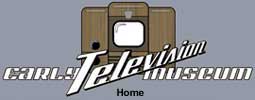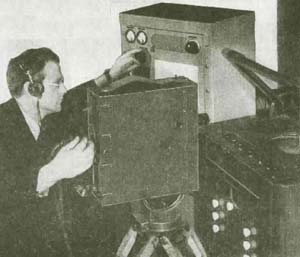Early Electronic Television RCA Engineers Receive BBC from LondonNormally, TV signals only cover about 50-100 miles. Occasionally, because of atmospheric conditions, reception is possible over greater distances. In 1937 and 1938 RCA engineers constructed an antenna 800 feet long and 150 feet wide on Long Island to pick up British BBC transmissions from Alexandra Palace in London. Here is more detailed technical information and a 1939 Washington Post article about RCA's reception of the London station.
A preamplifier was used, shown in the background. A RR-359 receiver is on the right, while a 16 mm film camera is in front. Amazingly, a 4 minute film clip, showing distorted, fading pictures, still survives. It is among the very few images we have from early TV screens. This film was discovered by Maurice Schechter, who kindly supplied a videotape copy to the museum. You can see the clip here:
|



